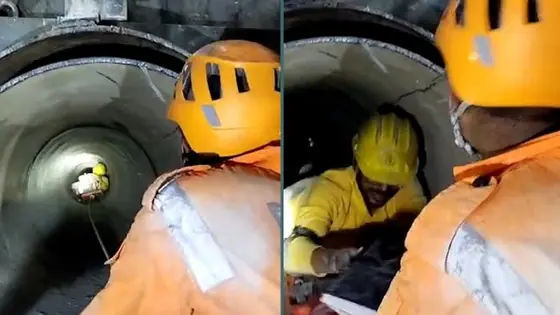
Silkyara tunnel rescue operation: How 41 trapped workers will be pulled out on stretchers (WATCH)
The NDRF showcases the manoeuvre of wheeled stretchers through the pipeline as part of the rescue operation for the 41 workers confined inside the Silkyara Tunnel. This process will be implemented once the horizontal pipe reaches the other side.
Ambulances stood by as rescue teams worked to clear the last layers of debris, which separated them from 41 workers trapped in a collapsed road tunnel for nearly two weeks. Specially equipped stretchers with wheels were on standby, poised to transport the exhausted men through a 57-meter (187-foot) steel pipe once it penetrated the final section of the massive amount of earth, concrete, and rubble obstructing their path to safety. At the site, emergency vehicles and a field hospital were prepared to receive the workers who have been confined since a segment of the under-construction Silkyara Tunnel in Uttarakhand collapsed 12 days ago.

"We have done rehearsals on how to get people safely out," National Disaster Response Force chief Atul Karwal told reporters Thursday.
"The boys will go in first," he said. "We have put wheels under the stretchers so that when we go in, we can get the people out one by one on the stretcher -- we are prepared in every way."
However, the rescue operation has encountered persistent delays, including additional debris falling, concerns about potential further cave-ins, and breakdowns in the drilling machinery. Progress on Thursday was impeded by additional mechanical issues, adding to the challenges faced by the rescue teams.
"The 10 to 12 metres (32 to 39 feet) remaining... we don't know what can come up, but we are ready to handle it," Karwal said, adding that the trapped men were "keeping up their morale".
Chief Minister Pushkar Singh Dhami of Uttarakhand emphasized that the efforts were underway with a sense of urgency, describing the operation as being conducted on a "war footing." He highlighted the establishment of a comprehensive setup, including a team of doctors, ambulances, helicopters, and a field hospital.